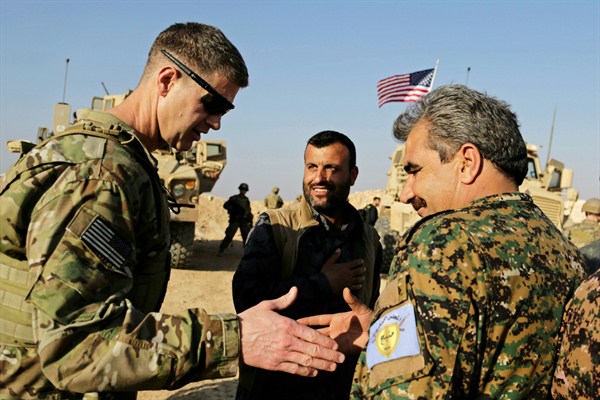A little more than a year into his administration, President Donald Trump is facing a major decision on America’s next steps in Syria. His predecessor, Barack Obama, first sent U.S. troops into the country’s civil war to help local opposition forces defeat the self-styled Islamic State. Trump then increased the number of U.S. forces on the ground there. But now that the Islamic State has been driven back in Syria, losing much of the territory it once claimed as its “caliphate,” Trump has indicated that he might withdraw U.S. forces “very soon.”
Officials in the Pentagon advocate a different approach. Simply crushing the Islamic State on the battlefield and then withdrawing, they believe, might allow the extremists to regroup and move back in. Even if they don’t, Syrian President Bashar al-Assad could exploit American disengagement to wipe out the local forces that Washington has supported, benefiting the Syrian regime’s Iranian and Russian allies. Leaving too soon, the Pentagon believes, would turn a hard-won success against the Islamic State into a strategic failure.
Meanwhile, another suspected chemical attack by Assad’s forces last weekend has raised the prospect of another punitive U.S. strike in Syria, a little over a year after Trump ordered the bombing of a Syrian airfield after dozens of civilians died in a sarin gas attack in northern Syria. In responding to the latest use of chemical weapons in Syria, Trump and the Pentagon also appear to disagree on the approach. Earlier this week, Trump declared that American missiles “will be coming,” a threat Defense Secretary James Mattis has already tried to walk back—and so, it even seems, has Trump.

